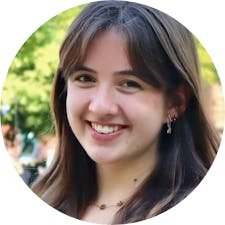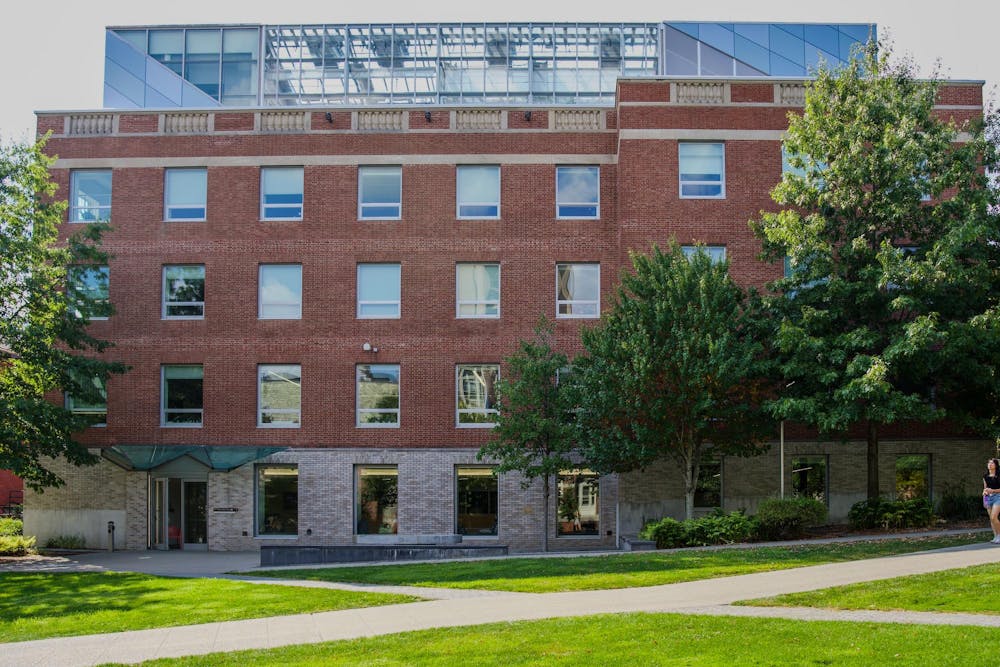When asked what it was like to concentrate in environmental studies at Brown in the 90s, Chip Giller ’93, who founded the environmental news organization Grist, replied, “So your question is, ‘What was it like to be a weirdo?’”
The environmental studies concentration was created in the 1970s, and the field has grown tremendously at Brown since then. This May, the Institute at Brown for Environment and Society celebrated their 10th anniversary.
The environmental studies concentration was previously a part of Brown’s Center for Environmental Studies, where much of IBES’s tight-knit community comes from, according to Giller. The center later merged with the Environmental Change Initiative, the research arm, to create IBES.
“It might have been roughly 20 people concentrating in a year,” said Giller, who played a large role in the anniversary celebrations. “It was just incredible to build community and find community with a set of people.”
When Senior Lecturer and IBES Director of Undergraduate Studies Dawn King started at Brown 13 years ago, the department was home to around seven faculty and graduated about 25 students per year. Now, there are 28 core members of the IBES faculty, with many more co-hired across other departments ranging from biology to history. This past year, over 60 students graduated from the Institute.
Although students focus on a myriad of issues running from lead poisoning to food deserts, “we all share this core passion for making the world a better place,” Giller said.
‘Students built this’
During his time at Brown, Giller pointed to the Urban Environmental Lab as a community hub for environmentally inclined students. The UEL continues to serve as a home base for undergraduate students in IBES.
Students were the key players in creating both the spirit and physical structure of the UEL when it was built in the 80s, according to King. Likewise, when the UEL was at risk of demolition in 2017 to make room for the Lindemann Performing Arts Center, it was student protests that saved it.
Like the UEL, the student body pushes for many of the major movements in IBES, students and faculty told The Herald.
“We thrive because we are succeeding on behalf of students, and students are helping us understand where they want to go, and what they want from us,” IBES Director Kim Cobb said. “We are listening, and we are delivering.”
Over its lifetime, students have pushed for IBES to expand its diversity initiatives.
In 2014, students circulated a petition calling for diversity in faculty at the Institute for the Study of Environment and Society, pointing out that “only 1 out of 12 professors (identified) as non-white.”
In 2016, students wrote an open letter calling for “real inclusion and diversity” in IBES. The letter, which was written and signed by about 100 students, pointed out that “environmental issues affect the most vulnerable first and worst.” From this activism, IBES launched their environmental justice track the next year.
“It's been 10 years of students fighting,” said Isaac Slevin ’25, an environmental studies concentrator. “You can only specialize in environmental justice because of students, not because of the leadership from the top.”
In 2023, two students, Ma’iingan Wolf-Garvin ’25 and Neshima Vitale-Penniman ’25, circulated an open letter petition about their “sense of non-belonging in IBES” and made another call for faculty diversity in hopes of “making some shifts for other people coming into IBES in the future,” Vitale-Penniman explained.
In the letter, the two students discussed how integral the perspectives of “environmental academics of color” are, both to the body of knowledge of environmental studies and to “provide invaluable mentorship to BIPOC students” at Brown.
“We live in a country that is built on stolen land and stolen labor, and I don’t really feel those histories represented in our environmental department,” Vitale-Penniman said. She called for a more robust inclusion of environmental thought and modes of resistance coming from Black, Indigenous and other people of color in IBES’s curriculum.
The department also responded with a letter outlining its current initiatives: a new DEI position filled by Dan Ibarra, enhanced policies for faculty hiring and ENVS curriculum revisions, including the AB curriculum revision that required all students to take an environmental justice class.
“I was grateful that this was already an active conversation, and I appreciated the restructuring of the curriculum to better integrate environmental justice and the hiring processes,” Vitale-Penniman said. “There's certainly progress, but still a long way to go, and I'm hoping that there is continued commitment to making those changes.”
Director of Research at IBES Scott Frickel has been at Brown for 10 years. He acknowledged that the “IBES faculty continues to look pretty white,” but also said that they are “trying hard to diversify the faculty.”
After a period of dormancy during the pandemic, IBES’s Diversity and Inclusion Action Plan committee re-formed amidst continued criticism of a lack of diversity in IBES staff. Made up of faculty, staff and students, the DIAP committee pushed for the department to consider student input when hiring and pushed for two new POC faculty members to be hired, according to former member Isabella Garo ’24.
“There had only been, prior to last year, two POC faculty members in IBES, and there’s a lot of faculty in IBES, so that is a pretty low number,” Garo said. “Environmental science and studies is something that has been very whitewashed for a long time, and so unfortunately, it can be a little difficult in that sense, but two is just ridiculously low, especially when you have so many indigenous and Black scholars working on things like environmental justice.”
Though she found the lack of diversity frustrating as a woman of color pursuing environmental studies, Garo said that the “magic of IBES” is their willingness to engage with undergraduate students.
“If they continue down this road of continuing to meaningfully engage with their students as much as they have been in the last year, I think they're going to be just fine,” Garo said. “I wish other departments did as much and as well as they did.”
‘The problems themselves exist in a multidisciplinary space’
With an expansion of its number of faculty, there has also been an increase in interdisciplinary research and teaching.
“We've more than doubled (in faculty) in the 10 years, and that doubling has also expanded the range, the disciplinary range of IBES,” Frickel said. IBES has recently added economists, anthropologists and public health experts to its faculty.
“The problems themselves exist in a multidisciplinary space, and it’s going to take a multidisciplinary or interdisciplinary effort to really get on top of them,” he added.
In her two years as IBES director, Cobb has focused on collaboration across different disciplines at Brown, converging upon the new community-based research initiative Equitable Climate Futures, which was funded by the provost this summer and will launch this winter.
“If we’re successful in five years, we will have seen a mushrooming of new centers of excellence in climate research all across campus, spanning from the arts and humanities all the way into engineering and public health,” Cobb said.
ECF continues IBES’ direction of maintaining a deep involvement in the Providence community, King said. Recent projects like Breathe Providence — the implementation of a local air monitoring network in Providence to better understand how air pollution affects underserved communities — reflect this ongoing institutional goal.
“We are making sure that the research that happens under the guise of Equitable Climate Futures is truly community-engaged from the very beginning,” said ECF faculty director Elizabeth Fussell.
‘10 years is a long time, but it’s also a very short time’
IBES is only 10 years old, but environmental studies has existed at Brown for decades. Most of the people who have graduated with an ENVS degree from Brown have never heard of IBES, so celebrating 10 years was a chance to unite the past and current histories of environmental studies at Brown, Giller said.
“10 years is a long time, but it's also a very short time to see how much we've grown,” King said.
When Cobb arrived at Brown two years ago, she says she “came into an institute that was in the middle of a huge growth spurt,” so the path forward is to “tap (their) full potential.”
“It’s never been more important to work together and to find new partners across campus and beyond, and to sustain relationships that can be transformative in terms of the impact of IBES,” Cobb said. “And so I think this is a moment where we're asking ourselves, ‘What if?’ and ‘Why not?’”

Elise Haulund is a science & research editor and sophomore from Redondo Beach, CA. Concentrating in English and biology, she has a passion for exploring the intersection between STEM and the humanities. Outside of writing, researching and editing, she enjoys ballet-dancing, cafe-hopping and bullet-journaling.





